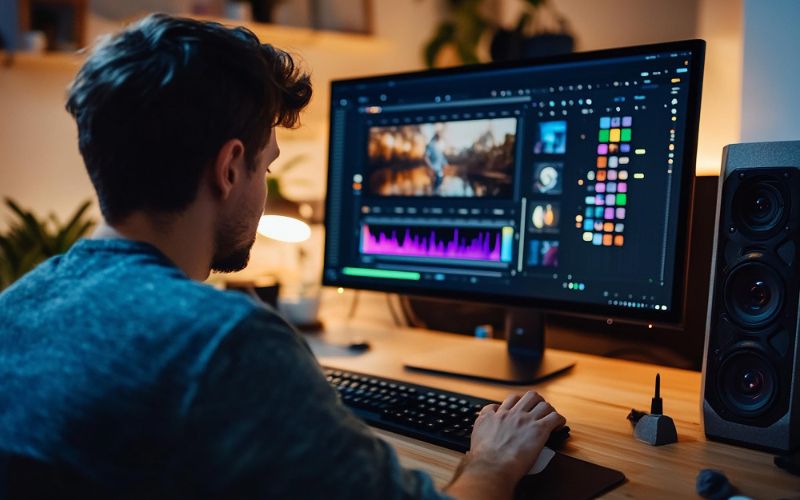Video editing is a basic skill in this modern world. It can use storytelling with visual effects, so from personal projects to professional projects, video editing holds the key to engaging viewers. Thus, learning how to do the basics for the sake of hobbyism or professionalism is important in the field. Pro video editing course gives one the essential background for mastery. In this course, you will learn the essentials that you should expect and how to take care of yourself on the way forward as a new student. With a good footing, you will be enabled to further explore your imagination and develop your ideas.
1. Understanding Video Editing
Video editing is the rearrangement of video footage into a new story or enhanced content. This involves cutting, trimming, and applying effects to make videos more engaging. For a beginner, it is important to know these skills. Many video editing courses start by introducing fundamental concepts and setting a strong foundation. Before signing up, check the video editing course fees to get the best within your budget.
2. Choosing the Right Video Editing Course
Most courses are focused, with some covering only the most fundamental ways of editing. Others go deep into advanced skills. You should choose based on your needs. Do you want to make simple videos or professional ones? A well-structured course can make all the difference to your learning journey. If you wish to move into a creative career, a pro video editing course can give you more exposure.
3. The Basics of Video Editing Course
In a good course, you will first learn the basics of video editing, and understand video format and resolution for the videos you are editing. Companied by the popular video editing software, among others; it includes Adobe Premiere Pro, Final Cut Pro, and DaVinci Resolve. Several courses offer hands-on experiences using these tools. With these basics, you are well on the road to getting started and trying various other things. Don’t forget to pay attention to video editing course fees as you explore different options.
4. Learning The Software
Each program has unique features. Generally, you will learn how to import/export videos, cut and clip, and use transitions. As you practice, learn by doing more complex work, like color grading or mixing audio. Advanced-level pro video editing courses prepare learners for real projects.
5. Understanding Video Editing Techniques
After mastering the software, practice editing techniques. Start with cutting and trimming clips to remove unwanted parts. Adding text and graphics enhances the story. Another effect used for making a video smoother and catchier would be transitions. As you become more advanced, you can apply techniques like keyframing and motion graphics to enhance your skills, especially if you plan to join a pro video editing course later.
6. Working with Audio
Audio is half of video editing. You should learn how to use audio levels, mix sounds, and sync them with video clips. Decent audio can make or break the video. Most training programs teach how to balance and mix sound. An advanced course in audio editing forms a complete package of neat video content. Check if your course explains how to edit audio and present your video with proper sync, including video editing course fees with sound.
7. Editing Workflow
Understanding the workflow of editing is key to becoming an efficient editor. First, organize your footage. Create folders for clips, audio, and images. This will save time in the editing process. Learn about setting up your project in the software, requiring the right frame rate and resolution. Such a structured approach allows for creativity without getting lost in clutter.
8. Practicing with Real Projects
Practice is required while studying video editing. You could edit family videos or produce short clips as practice. The better you get, the more you practice. Seek challenges online or take part in video contests in your locality to test your skills. A pro video editing course can provide real-world experience through project assignments.
9. Seeking Feedback
This will be your way of improvement as a video editor. Share edited videos with friends, family, or online communities. Seek constructive criticism and take it well. It will help you realize growth areas and mistakes to correct. Form a closed group with other learners, sharing your work and taking opinions from one another.
10. Networking and Collaboration
Connecting with other video editors can lead to new possibilities. Join forums, workshops, and online communities. Collaboration leads to beneficial learning experiences. Networking in the creative industry is crucial. You learn from others and receive input that helps you grow.
Conclusion
Video editing courses are perfect for a beginner. These courses teach the skills needed in today’s world, starting from scratch and learning incrementally. You learn several techniques and tools, and the better you get, the more practice you gain. The more you take the Moople Institute courses, the better you will become.

